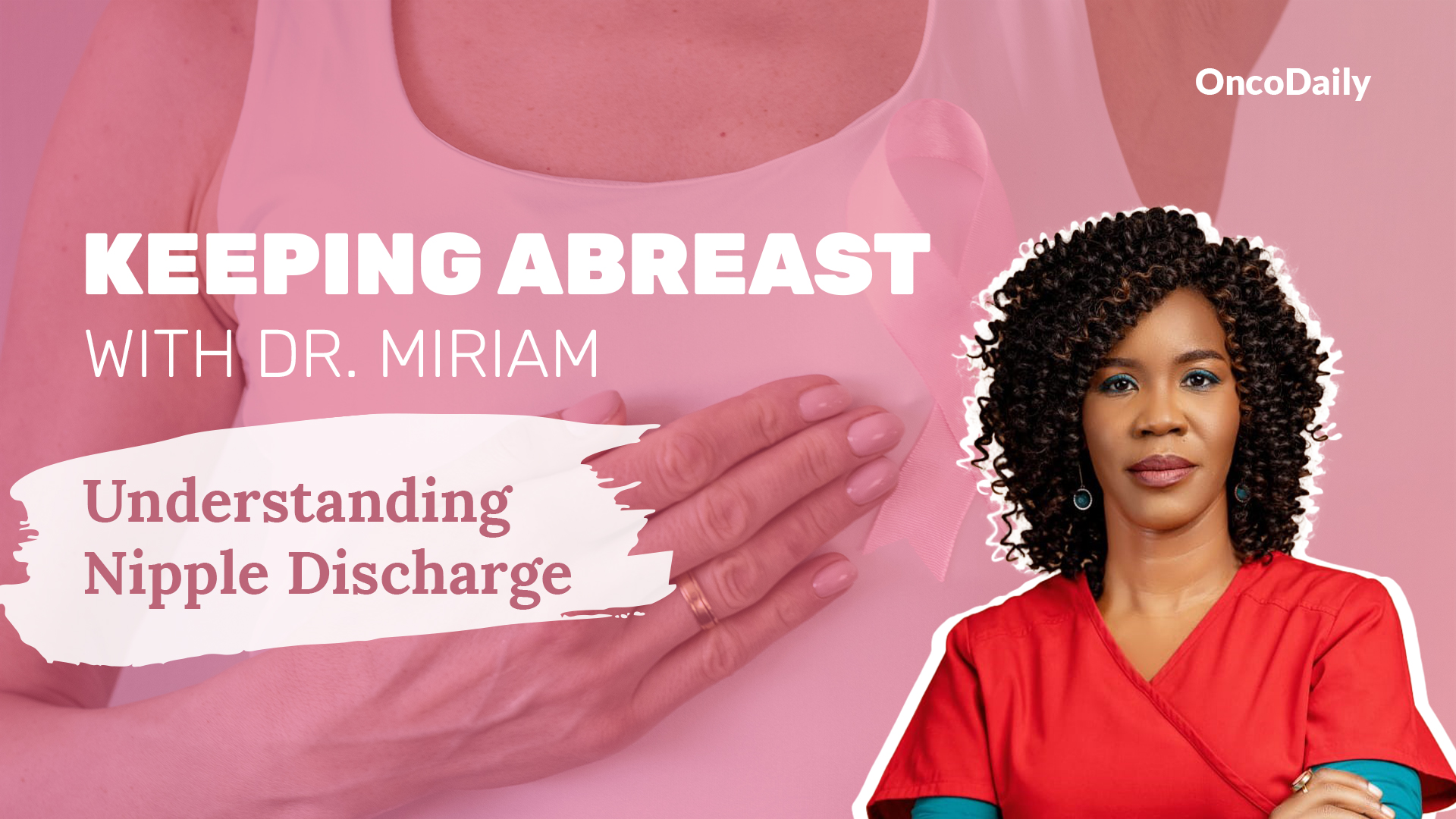Miriam Mutebi, Breast Surgical Oncologist and Assistant Professor in the Department of Surgery at the Aga Khan University Hospital, shared on LinkedIn:
“Nipple discharge—sounds a bit alarming, doesn’t it?
Before you start worrying, let’s chat about it in a way that feels a bit lighter.
For starters, if you are having a nipple discharge know that this is a duct concern. From an evolutionary perspective, we know that our breasts: the female breast specifically -are designed to provide milk to babies.
The breast is made up of glands and ducts. Think of the glands as the factory that produces the milk while the glands are the transport network that delivers the milk from the factory to the depot–the baby.
Physiologically, ducts appear like tiny connected cylindrical tubes of 1-2mm that end in tiny bumps on the surface of your nipple –these expand during pregnancy and breastfeeding to make it easier for the baby to receive the milk.
Some types of nipple discharge are therefore completely normal. For instance, if you’re pregnant, breastfeeding, or going through puberty, a milky or clear secretion that appears when you gently squeeze your nipple is nothing to worry about. These discharges/ secretions usually tend to occur in both breasts.
What’s Normal and What’s Not?
Normal Secretion: A clear, yellow, or even greenish fluid that comes out only if you squeeze your nipple. This is frequently your body’s natural response to hormonal shifts.
When to Pay Attention: Here’s where things might need a closer look. The below signs could point to a more complex benign pathology, or a breast cancer:
– You have a lump in your breast.
– The discharge comes from only one breast.
– The discharge is bloody.
– The discharge happens on its own (spontaneous) and is ongoing.
– The discharge comes from a single duct; i.e., one of the small holes on your nipple.
– You are on medication for some chronic conditions e.g. antihypertensive medication, antidepressants, etc.
If any of the above signs show up, ding, ding, ding, it’s time to see your doctor. Think of it as your body sending a message that needs attention.
In many African communities, discussions about breast health can feel taboo, but it’s time to break that silence. Men, you too! With a family history of breast cancer, staying informed about body changes is key.
No need to panic—just don’t ignore it! A chat with a healthcare provider can bring peace of mind. Let’s normalize these discussions and keep each other informed.”
More posts featuring Miriam Mutebi on oncodaily.com
Miriam Mutebi is a Breast Surgical Oncologist and Assistant Professor in the Department of Surgery at the Aga Khan University Hospital in Nairobi, Kenya. She is the President of the African Organization for Research and Training in Cancer (AORTIC), and past president for Kenya Society of Hematology and Oncology (KESHO) and on the Board of Directors of the Union for International Cancer Control (UICC).
She is the co-founder of the Pan African Women’s Association of Surgeons and is part of the Kenya Association of Women Surgeons. She is an avid supporter for the education and support for women, especially in surgery and she aims to provide mentorship for women in surgery and to improve women’s health and surgical care in Africa. She is currently pursuing a pilot’s license in order to extend breast care services to marginalized areas.
